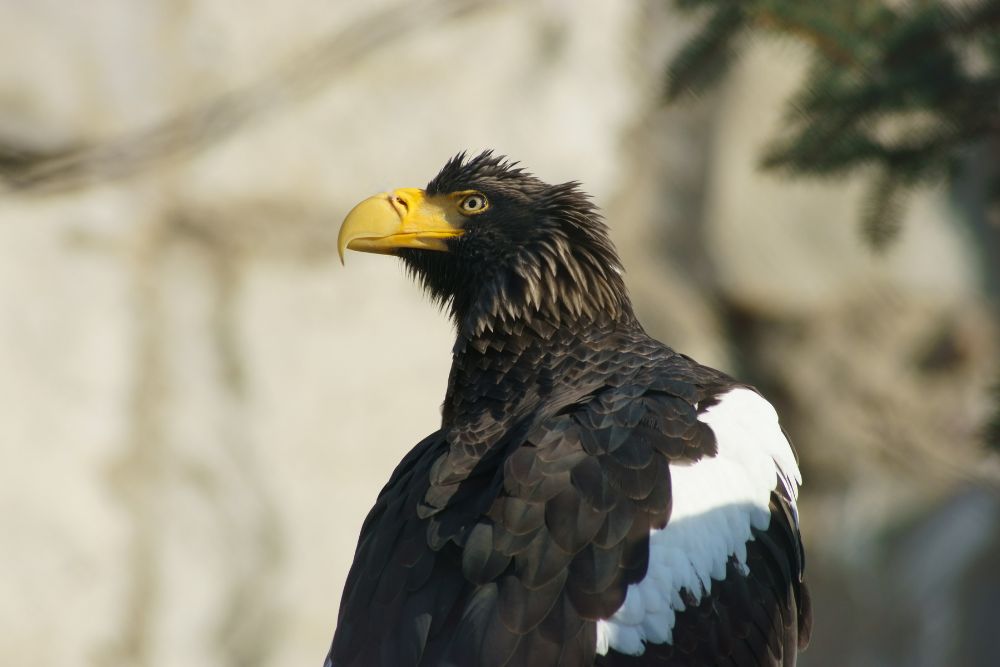How Long Eagles Sleep? Unraveling the Sleeping Habits of Eagles
When it comes to the realm of magnificent birds, few can match the awe-inspiring presence of eagles.
These majestic creatures, including the iconic bald eagle, captivate our imagination with their soaring flights and keen hunting abilities. But have you ever wondered how long do eagles sleep?
Eagles sleep about 10 to 12 hours a day, surpassing the average 8 hours of sleep for human adults. Their sleep duration is relatively longer, enabling them to recharge and maintain their physical and mental well-being.
From the soaring heights of North American skies to the dense forests of South America, we delve into the sleep patterns, behaviors, and adaptations of these remarkable avian predators.
So, buckle up and join us on this journey as we unlock the secrets of how long eagles sleep and gain a deeper appreciation for these exceptional creatures of the animal kingdom.

Understanding Eagle Sleep Patterns
Diurnal birds, including majestic eagles, have different sleep patterns from nocturnal species. As diurnal creatures, they are most active during the day, relying on sunlight for hunting and other activities.
Birds exhibit various sleep patterns, varying from species to species. While some birds, like eagles, sleep at night, others may take short naps throughout the day.
These patterns are shaped by unique adaptations that allow birds to maintain their alertness and respond swiftly to environmental stimuli.
Most birds typically require substantial sleep to replenish their energy reserves.
While individual variations exist, most diurnal birds sleep for several hours each day, with eagles specifically averaging about 10 to 12 hours of sleep per day.
Unlike humans, who experience a continuous sleep cycle, birds often have fragmented sleep, allowing them to remain vigilant even during rest.
Birds employ various sleeping positions based on their species and environmental factors.
For instance, eagles are known to sleep perched on branches or rocks, with their heads tucked under their wings.
This posture conserves body heat and minimizes exposure to potential threats.
Sleeping locations also vary, with eagles favoring tall trees or cliff ledges, providing them with a strategic vantage point while they rest.
To ensure their safety and survival, birds have developed remarkable adaptations for sleep.
For example, eagles possess a fascinating ability called “unihemispheric slow-wave sleep,” where one hemisphere of their brain remains awake while the other rests.
This allows them to maintain vigilance and react swiftly to any potential danger during sleep.

Different Sleep Phases in Birds: Unveiling Avian Slumber
Like many other animals, birds experience different sleep phases vital for their well-being and survival. Let’s explore these sleep phases in detail and gain a deeper understanding of avian slumber.
NREM Sleep (Non-Rapid Eye Movement Sleep)
NREM sleep is a crucial phase during which birds experience deep, restorative sleep. In this phase, the brain activity slows down, and the body enters a state of relaxation.
During NREM sleep, birds may exhibit various behaviors, such as closing their eyes, tucking their heads under their wings, and perching securely on branches or ledges.
REM Sleep (Rapid Eye Movement Sleep)
REM sleep is a unique sleep phase characterized by rapid eye movements and increased brain activity.
Birds, including eagles, also experience REM sleep. During this phase, birds may display twitching movements, indicating intense brain activity and potentially dreaming.
REM sleep is thought to play a crucial role in memory consolidation, learning, and emotional processing.
Unihemispheric Slow-Wave Sleep (USWS)
One fascinating adaptation observed in eagles is unihemispheric slow-wave sleep (USWS).
During this sleep phase, one brain hemisphere remains awake while the other hemisphere enters a slow-wave sleep state.
This enables birds to maintain vigilance and awareness of their surroundings, ensuring their safety during sleep.
USWS allows birds to respond quickly to potential threats or take flight if necessary.
Microsleeps
Birds, particularly those that are perching or roosting, often experience short periods of microsleep.
These brief moments of sleep last only a few seconds to a couple of minutes.
Microsleeps serve as intermittent rest periods, helping birds conserve energy while maintaining some level of alertness.
Here is a quick table that will help you understand the sleeping behavior of different bird species:
| Bird Species | Sleep Duration | Sleeping Position | Sleep Phases |
|---|---|---|---|
| Bald Eagle | 10-12 hours | Perched, head tucked | NREM sleep, REM sleep, USWS |
| Great Horned Owl | 6-9 hours | Perched, head turned backward | NREM sleep, REM sleep |
| Common Swift | 4-6 hours | In flight | Brief bouts of NREM sleep, REM sleep |
| European Starling | 12-15 hours (nocturnal) | In trees, close to others | NREM sleep, REM sleep |
| Black-Capped Chickadee | 10-13 hours | Nest, curled up | NREM sleep, REM sleep |
| House Sparrow | 10-12 hours | Nests, close to others | NREM sleep, REM sleep |
| Emperor Penguin | Varies with season | Standing, huddled in groups | NREM sleep, REM sleep |
| Mallard Duck | 4-8 hours | In water or on land | NREM sleep, REM sleep |
Habitat and Sleeping Environment of Bald Eagles
Bald eagles, the iconic raptors of North America, are intimately connected to their natural habitat, encompassing diverse landscapes across the continent.
Let’s look closer at the habitat and sleeping environment of the bald eagle, one of the large eagle species on Earth.
Natural Habitat: Thriving in North America
Bald eagles primarily inhabit areas near large bodies of water, such as lakes, rivers, and coastal regions.
Their range extends across North America, including the United States, Canada, and Alaska.
These majestic birds often prefer habitats with abundant fish populations, their primary prey.
North America’s diverse ecosystems provide the perfect balance of water bodies, forested areas, and open spaces required for their survival.
Nesting in Tall Trees: Building Their Aeries
Bald eagles are known for their impressive nests, called aeries, which are built atop tall trees, usually near the water.
They carefully select trees with sturdy branches, sufficient height, and proximity to their hunting grounds.
Tall trees provide bald eagles with a strategic advantage, allowing them to survey their surroundings and protect their nests from ground-based predators.
Nest trees often become long-term homes for breeding pairs, who return to the same site year after year.

Factors Influencing the Sleeping Environment
Several key factors influence the sleeping environment of bald eagles.
Firstly, the location of their nests plays a crucial role.
Bald eagles tend to select secluded areas away from human disturbances, providing them with a sense of security and minimizing potential disruptions during sleep.
Additionally, the availability of prey near their nest plays a vital role. A sufficient food supply near their nesting site ensures that the eagles can rest comfortably without requiring extensive hunting excursions at night.
Bald eagles are highly adaptable and can adjust their sleeping patterns based on environmental conditions and prey availability changes.
They rely on their keen instincts to choose nesting sites that offer the best combination of safety, resources, and suitable sleeping conditions.
Do Bald Eagles Sleep At Night?
Yes, bald eagles do sleep at night. Like most birds, they have a sleep-wake cycle similar to humans, with rest periods at night. However, the sleeping habits of bald eagles can vary depending on factors such as their location and environmental conditions.
Bald eagles are diurnal creatures, so they are primarily active during the day. They spend their daylight hours hunting for food, maintaining their nests, and engaging in other activities. As evening approaches, they start to wind down and prepare for sleep.
Bald eagles typically find a secure perch high in a tree or on a cliff to spend the night. They prefer locations that provide safety from predators and shelter from the elements. These perches also give them a vantage point to observe their surroundings.
During sleep, bald eagles often tuck their heads under their wings and stand on one leg to conserve body heat. This behavior helps them stay warm during colder nights. They may also engage in short periods of deep sleep and lighter rest periods.
It’s important to note that bald eagles can still be alert to their surroundings while sleeping at night. They have excellent vision and hearing, allowing them to detect potential threats while resting.

What Time Does An Eagle Wake Up?
Eagles are early risers, typically waking up with the sunrise. As the first rays of light illuminate the sky, these magnificent birds of prey become active and start their day. From sunrise until around 10 am, eagles engage in various activities.
During this early morning period, you might witness eagles soaring through the air, surveying their surroundings, or engaging in hunting behavior. Their keen eyesight and powerful wings allow them to scan the landscape for potential prey and swiftly maneuver through the sky.
Breakfast is a crucial part of an eagle’s morning routine. They utilize their impressive hunting skills to catch fish, small mammals, or other suitable prey. Spotting an eagle during this time can be a thrilling experience as they display their agility and precision in capturing their meal.
Eagles tend to be less active as the day progresses into the early afternoon. You might find them soaring gracefully in the sky, using thermals to conserve energy, or resting on perches, branches, or cliff edges. They may appear more elusive and harder to spot during this time.
However, by late evening and dusk, around 4 to 5 pm, eagles become more active again. They seize the remaining daylight to engage in hunting activities and secure their dinner.
The fading light of the day doesn’t hinder their prowess, as their eyesight is exceptionally sharp during daylight hours. Spotting an eagle during this time can provide a fascinating glimpse into their hunting strategies and natural behaviors.
After their evening activities, eagles typically retreat to their nests to rest for the night. The safety and comfort of their nests provide them with a secure place to sleep, ensuring they are ready to greet the next day with renewed energy and determination.






